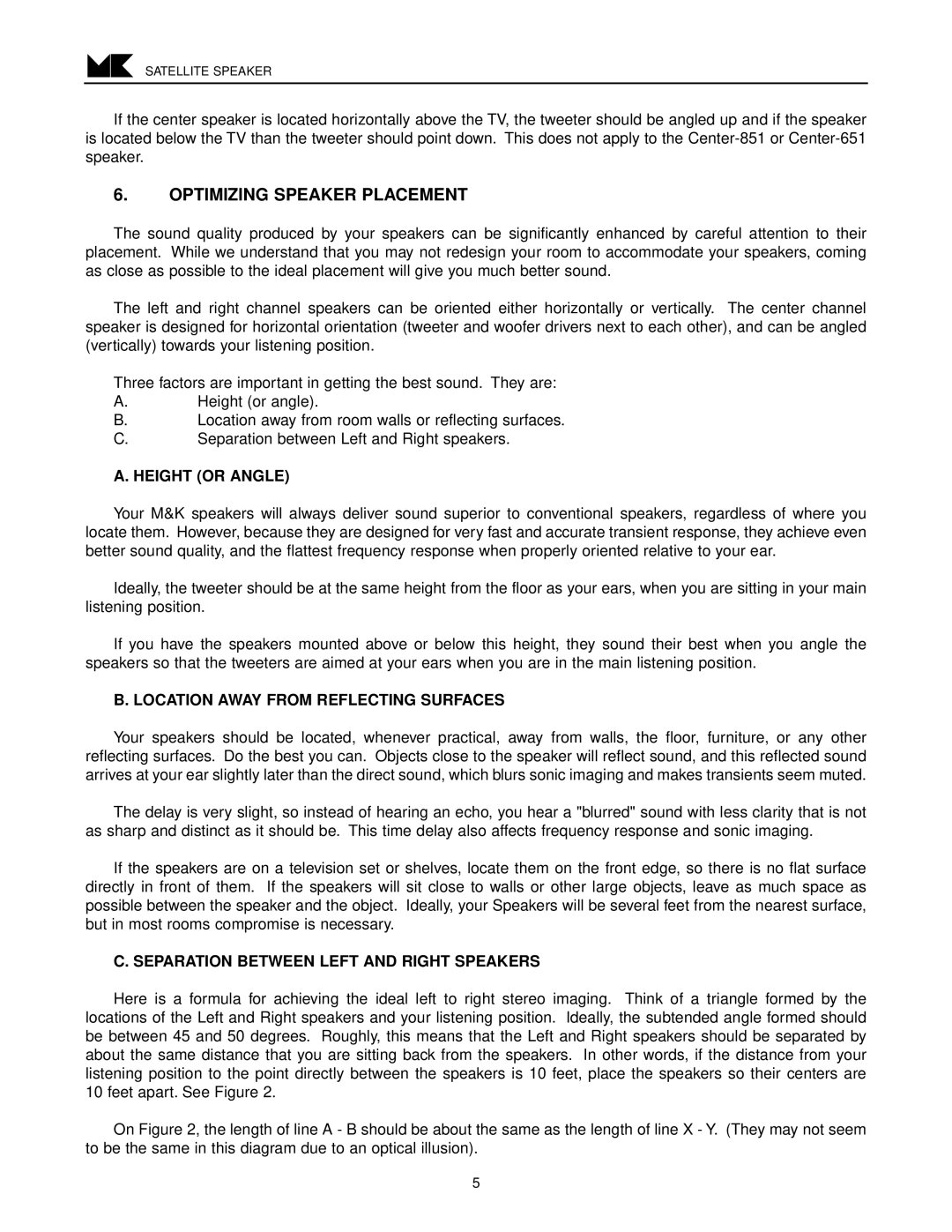LCR-650, LCR-850, LCR-851, CENTER-850, LCR-651 specifications
MK Sound is well-known for its dedication to high-performance audio solutions, and its latest lineup, including the CENTER-850, LCR-851, LCR-651, LCR-850, and CENTER-851, showcases innovative technologies and exceptional sound quality. Each model is designed to deliver an immersive audio experience suitable for both home theaters and professional settings.The CENTER-850 is engineered for high-driven power and precision. It features a low-frequency driver optimized for deep, impactful bass while ensuring smooth midrange reproduction. The integration of a specially designed tweeter allows for sparkling highs without distortion, making dialogue clear and crisp. This speaker is perfect for engaging movie soundtracks and enhances every cinematic experience.
The LCR-851 stands out with its versatility as a left, center, or right speaker option. This model includes advanced dispersion technology that ensures a wide soundstage, effectively filling the room with rich audio. The LCR-851 also incorporates dual woofers for enhanced bass response, allowing it to complement larger systems or serve as a standalone unit.
The LCR-651 offers similar versatility in a slightly smaller package. This model features a unique design that allows it to blend seamlessly into various environments. The LCR-651 boasts impressive clarity and detail at all volume levels, offering a balanced sound signature that’s perfect for music and film alike.
The LCR-850 is designed with robust drivers and sophisticated crossover networks to create a seamless audio experience. This model’s enhanced low-frequency response makes it ideal for larger rooms where sound needs to carry effectively. Its elegant design also ensures that it fits aesthetically in any home environment.
Finally, the CENTER-851 is crafted for those who want to elevate their home theater experience to the next level. With its powerful driver configuration, it delivers remarkably accurate dialogue and sound effects, ensuring that no detail is lost. The speaker’s ability to handle high dynamic range audio allows users to enjoy an enthralling cinematic experience, truly bringing films to life.
Collectively, the MK Sound CENTER-850, LCR-851, LCR-651, LCR-850, and CENTER-851 represent a commitment to audio excellence, with each model designed to offer unique benefits while maintaining a consistent quality standard. With advanced technologies, these speakers ensure a captivating audio experience perfect for enthusiasts and casual listeners alike.
